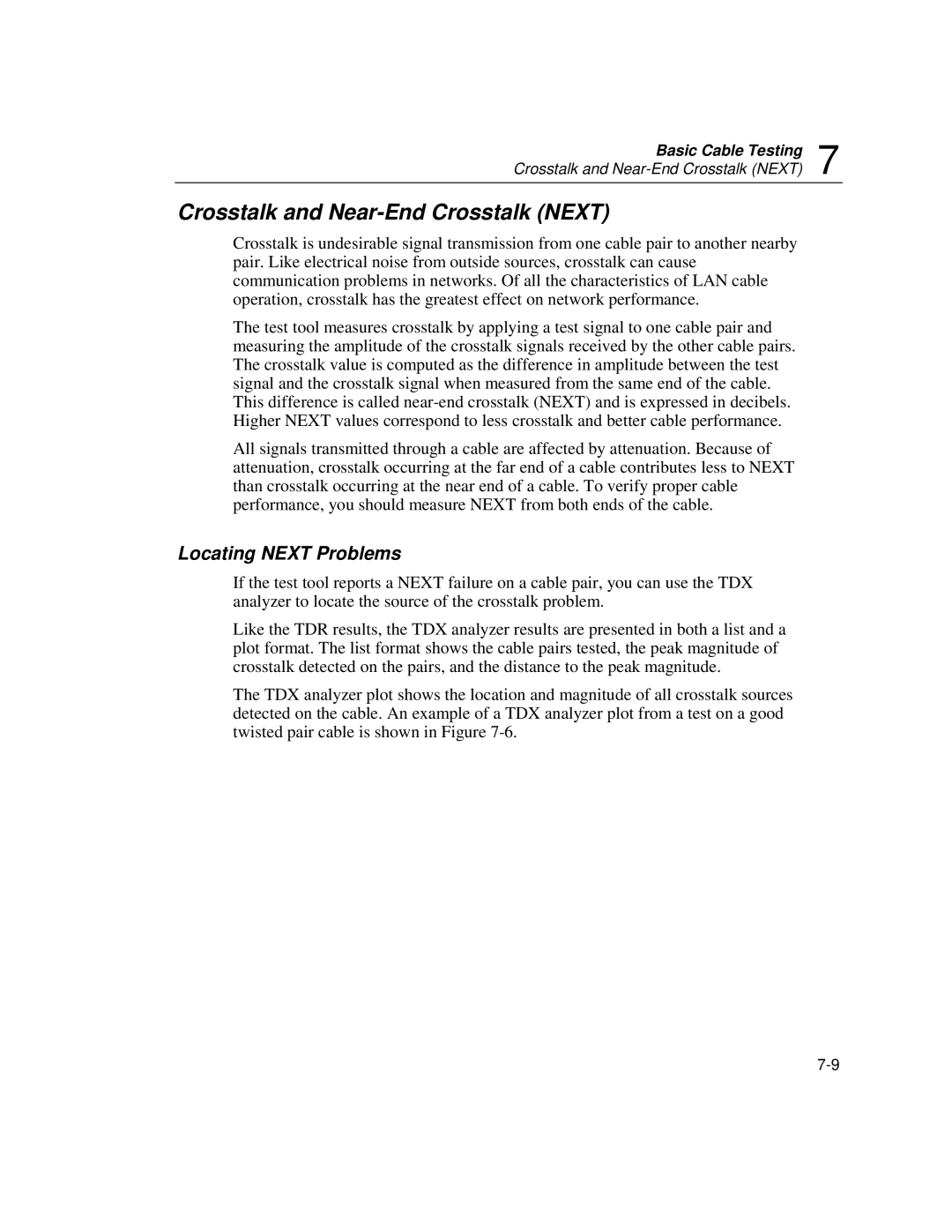Basic Cable Testing 7
Crosstalk and
Crosstalk and Near-End Crosstalk (NEXT)
Crosstalk is undesirable signal transmission from one cable pair to another nearby pair. Like electrical noise from outside sources, crosstalk can cause communication problems in networks. Of all the characteristics of LAN cable operation, crosstalk has the greatest effect on network performance.
The test tool measures crosstalk by applying a test signal to one cable pair and measuring the amplitude of the crosstalk signals received by the other cable pairs. The crosstalk value is computed as the difference in amplitude between the test signal and the crosstalk signal when measured from the same end of the cable. This difference is called
All signals transmitted through a cable are affected by attenuation. Because of attenuation, crosstalk occurring at the far end of a cable contributes less to NEXT than crosstalk occurring at the near end of a cable. To verify proper cable performance, you should measure NEXT from both ends of the cable.
Locating NEXT Problems
If the test tool reports a NEXT failure on a cable pair, you can use the TDX analyzer to locate the source of the crosstalk problem.
Like the TDR results, the TDX analyzer results are presented in both a list and a plot format. The list format shows the cable pairs tested, the peak magnitude of crosstalk detected on the pairs, and the distance to the peak magnitude.
The TDX analyzer plot shows the location and magnitude of all crosstalk sources detected on the cable. An example of a TDX analyzer plot from a test on a good twisted pair cable is shown in Figure
